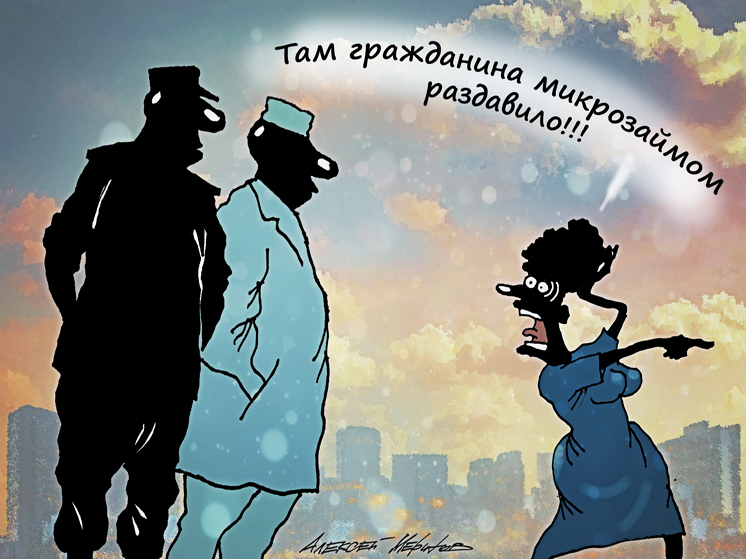Experts explained why, despite the growth in income, Russians will continue to borrow ever larger amounts
In the first half of 2024 in Russia, according to research, the average size of a microloan that citizens requested from microfinance organizations (MFOs) increased by 55%. Over the year, the average size of microloans that Russians were interested in increased by almost 11 thousand rubles. Why, despite the increase in income, compatriots continue to borrow money from microfinance organizations, without fear of overpayments on interest, MK found out from experts.
 < span itemprop="height" itemscope itemtype="https://schema.org/QuantitativeValue">
< span itemprop="height" itemscope itemtype="https://schema.org/QuantitativeValue">
The situation looks paradoxical. According to Rosstat, real disposable income of citizens (minus mandatory payments and adjusted for inflation) in the first half of 2024 increased by 8.1% compared to the same period last year. However, if you look at the lending statistics, you get the feeling that people still do not have enough money. The size of microloans in MFIs increased by 55%, reaching 30.8 thousand rubles. For comparison, in the period from January to June 2023, it was 19.9 thousand rubles. And a loan of more than 30 thousand rubles is somehow difficult to describe with the term «micro».
A similar trend was confirmed by other market participants. “In January-June 2024, the share of large loans over 30 thousand rubles in the total structure of MFI loans was 21%, an increase of 6% compared to the same period last year,” says Alexey Volkov, Marketing Director of the National Bureau of Credit Histories (NBCH). “In turn, the share of “payday loans” up to 30 thousand rubles, on the contrary, is decreasing.” Thus, recently the structure of demand for microfinance products has been shifting towards larger loans.
The demand for microfinance loans over 30 thousand rubles from borrowers has been growing since the second half of last year, the expert noted. This is due to the adjustment of credit policies of microfinance organizations against the backdrop of measures to «cool» the unsecured lending market taken by the Central Bank of the Russian Federation — in particular, the introduction of macroprudential limits on the debt burden of borrowers.
According to Natalia Milchakova, a leading analyst at Freedom Finance Global, microloans have increased because it has become more difficult to obtain an unsecured consumer loan from a bank after banks tightened their requirements for borrowers. Therefore, people who need loans not only «until payday» but also for large purchases have started to turn to microfinance organizations instead of banks. In addition, a bill on regulating installment plans is currently being considered, and it may also become difficult to purchase goods in installments today. Microfinance organizations usually issue loans of up to 60 thousand rubles, since interest rates there are high, and, accordingly, servicing microloans in larger amounts will be expensive. An amount of 30-31 thousand rubles is quite suitable for the definition of a microloan. In principle, you can get a credit card from a bank for this amount. But if the borrower's debt burden ratio (DBR) exceeds 50%, they may refuse to issue it, the analyst notes.
The size of microloans is increasing because people whose salaries have not increased (and they are not increasing for everyone) are forced to turn to microfinance organizations if banks refuse, or simply because it is easier and faster to get a loan from an microfinance organization than to get a credit card from a bank. “The growth of salaries and incomes among different groups of the population is uneven, for this reason, citizens whose salaries are growing at a slower rate in relation to inflation are forced to use microloans,” confirms the trend, Professor Alexander Safonov of the Financial University under the Government of the Russian Federation. In addition, salaries in the same profession can vary greatly from region to region. In those places where local budgets do not have enough funds, the population's income does not grow much.
“Most likely, the trend of increasing demand for microloans will continue as long as interest rates on loans remain high, and the increase in salaries in a number of professions continues to slow down,” believes Natalia Milchakova. If the debt burden and personal credit rating of citizens are at an acceptable level, then MFIs will be ready to continue providing them with loans for larger amounts and longer terms than in the case of “payday loans,” the NBCH confirmed.


